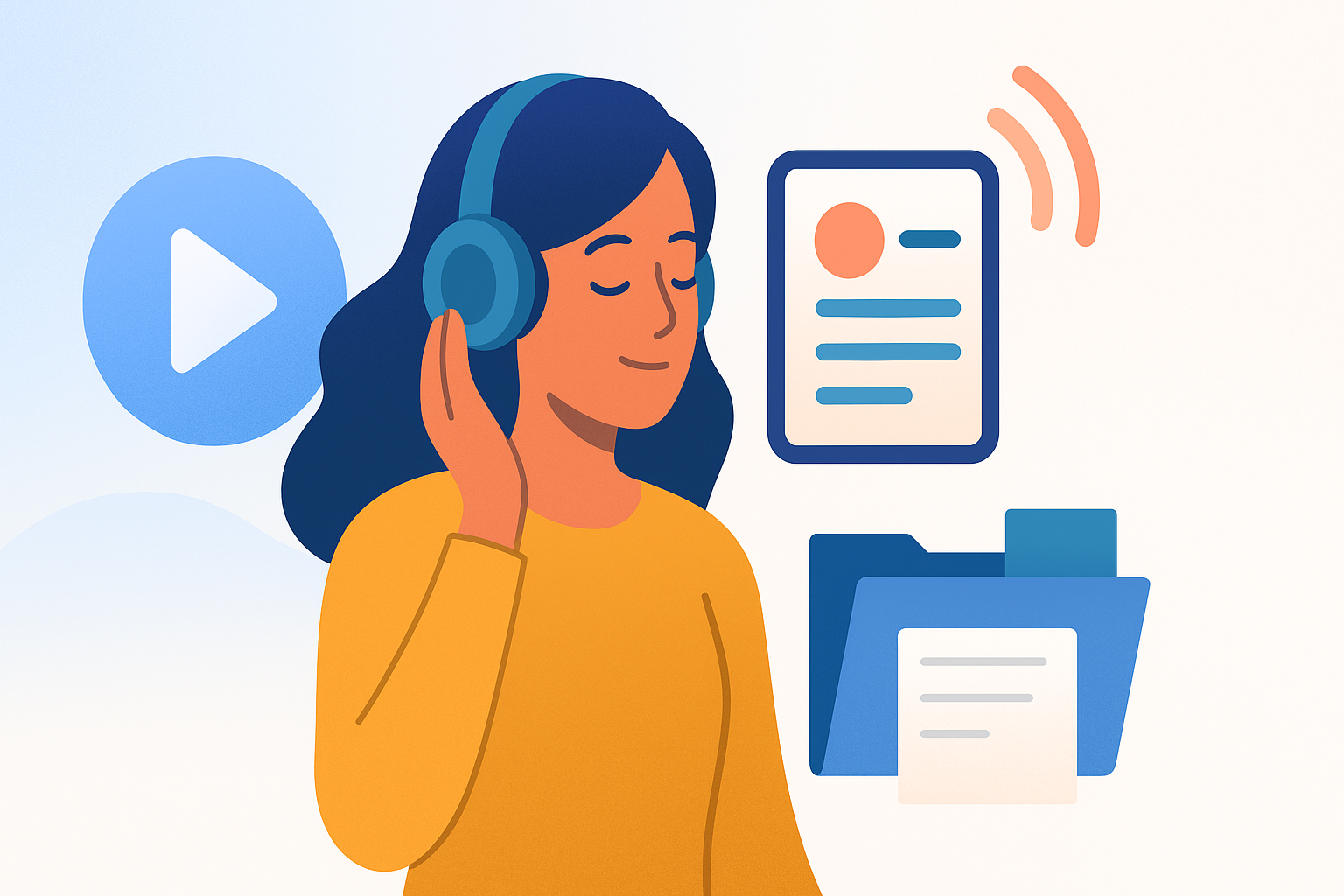


Recorded directives, messages, and materials—also known as audio instructions or voice recordings—are pre-recorded audio files designed to communicate important information clearly and accessibly. This accommodation supports individuals who have difficulty reading written text, processing complex instructions, or require auditory reinforcement due to cognitive, visual, or learning disabilities. By providing verbal explanations, reminders, or guidance, these recordings help improve comprehension and task completion. They can be used in various settings such as workplaces, educational environments, and public services to offer consistent, repeatable communication that respects diverse learning styles and accessibility needs.
Start by identifying key information that needs to be communicated regularly or clearly. Use clear, concise language when recording messages, and speak at a moderate pace. Store recordings in accessible formats and locations, such as shared drives or apps, so users can easily access them when needed. Regularly update recordings to reflect current information and check audio quality to maintain clarity. Encourage feedback to improve the usefulness of the recordings over time.
Disclo streamlines requests, documentation, and tracking for Recorded Directives, Messages, and Materials, so HR teams and employees spend less time on paperwork and more time working productively.
